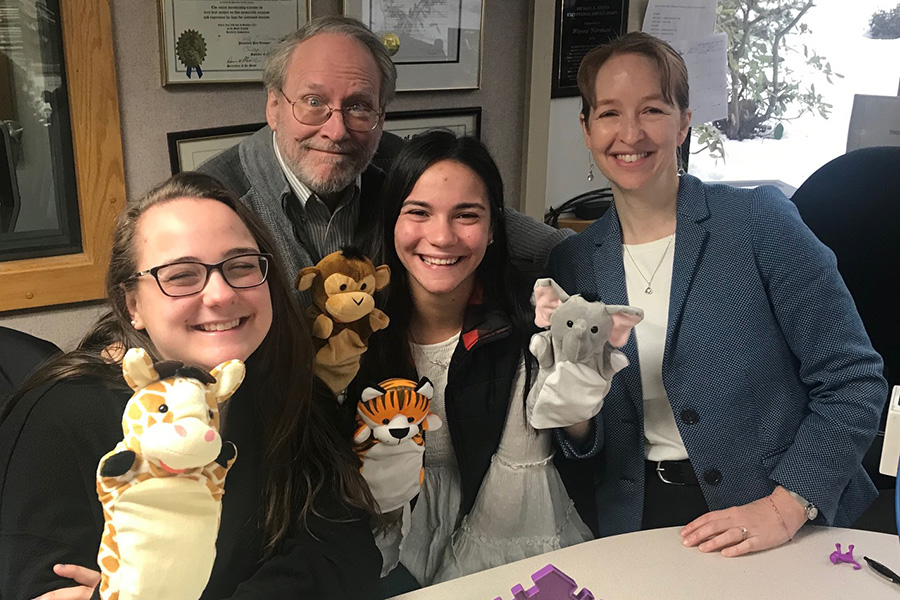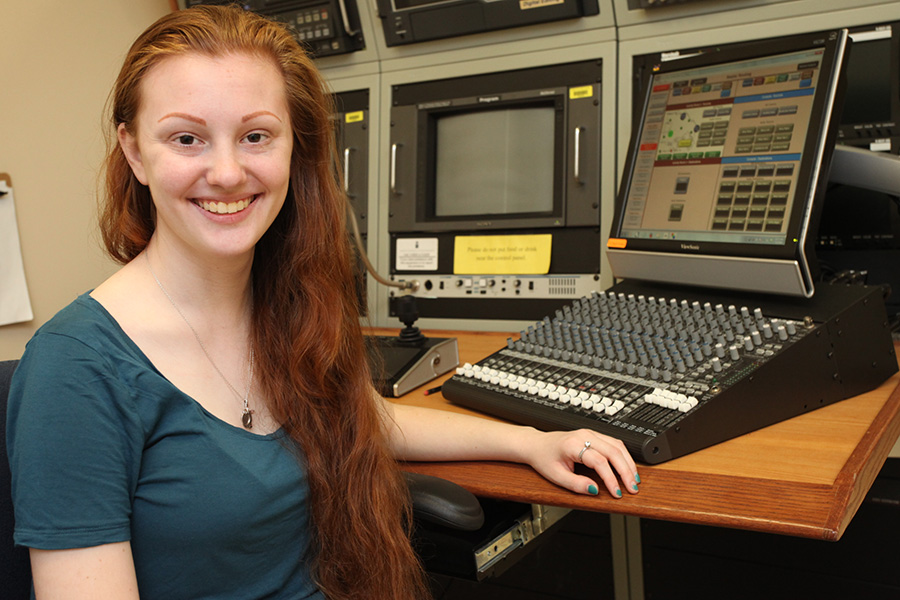- Apply
- Visit
- Request Info
- Give
Campus Briefs
Eastern’s sustainability efforts receive 'Gold' rating
Published on May 04, 2023

Eastern has received its first “gold” rating for sustainability from the Sustainability Tracking, Assessment and Rating System (STARS). Eastern was one of only three colleges in Connecticut to receive a gold rating and is one of 138 colleges and universities nationwide to be gold-rated by the Association for the Advancement of Sustainability in Higher Education.
The rating is a way for colleges and universities to measure their sustainability performance in broad areas such as academics, operations, innovation and leadership, among others. The only other Connecticut institutions ranked gold are Yale University and Connecticut College.
Under President Elsa Núñez’s leadership, the University has revised its Climate Action Plan and pledged to become carbon neutral by 2030, while advancing climate resiliency through participation in Second Nature’s Climate Leadership Network. “I am very proud of Eastern’s sustainability accomplishments,” said Núñez. “While there is much work ahead, we have made good progress and will continue to increase the integration of sustainability into our curriculum, enhance campus and community engagement, and improve efficiencies and carbon-free initiatives in our operations.”
“STARS provides a mechanism by which Eastern can prioritize actions to improve sustainable practices across all sectors of campus,” said Patricia Szczys, executive director of Eastern’s Institute for Sustainability. “This achievement is the result of efforts of the entire community.”
The gold rating is valid through 2025, at which point Eastern will submit a new report for review. The University’s latest report was peer-reviewed by sustainability specialists at Connecticut College and Wesleyan University for quality control prior to formal STARS submission.
Physical education students win fourth national college bowl
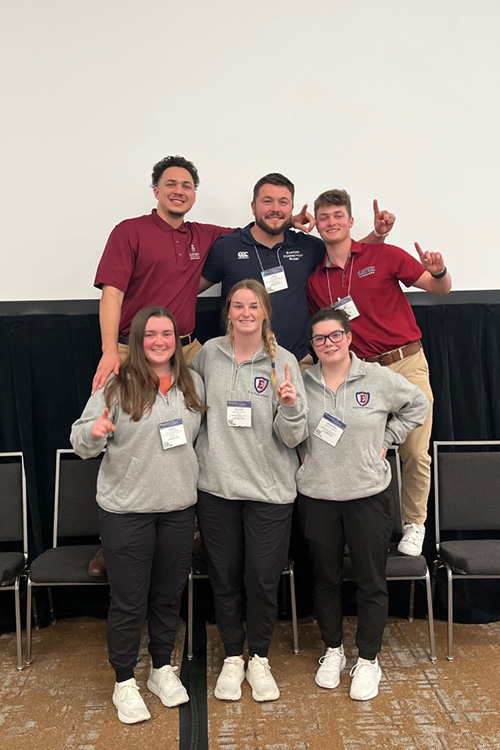
(First row, from left): Sarah Gallagher, Payton Shannon, Samantha Mowry. (Second row, from left): Isiah Lovell, Cole Paquin, Cole Hoffman
For the second year in a row and fourth year overall, Eastern physical education teacher candidates have won the Society of Health and Physical Educators (SHAPE) America National College Bowl. Sarah Gallagher, Isiah Lovell and Cole Paquin were on the winning team, with Eastern’s second team of Samantha Mowry, Payton Shannon and Cole Hoffman placing eighth. Paquin and Gallagher were on the 2022 national title team. Eastern students also won the SHAPE National College Bowl in 2017 and 2019.
This year’s College Bowl was held March 29 in Seattle, WA, at the SHAPE America National Convention and Exposition. Nineteen teams from throughout the United States competed in a “Jeopardy” style competition with questions in the areas of motor behavior, exercise science, adapted physical education, health and wellness, dance, sport and games, and assessment.
The Eastern students prepped for the national competition by winning the 13th annual Connecticut Association for Health Physical Education and Dance Dee Perilli College Bowl this past November.
“Eastern’s physical education teacher candidates complete coursework in a variety of topics that encompass what well-rounded professionals need to know within their majors, concentrations and professional lives,” said Darren Robert, department chair and professor of education. “Coupled with this instruction, teacher candidates receive numerous opportunities to put their knowledge to practice in real-world teaching experiences.”
Robert thanked health and physical education faculty, the Education Department, cooperating teachers, the students’ families and the Kalber family for their support. “Providing students/teacher candidates with experiences like this is what makes Eastern an awesome place to be!”
Archaeologist wins grant to study indigenous city
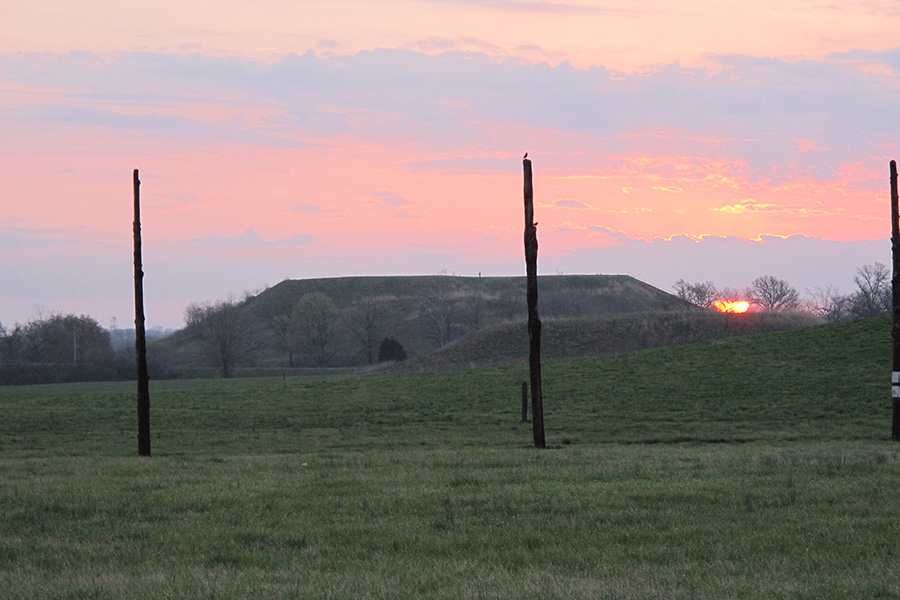
Sarah Baires, associate professor of anthropology, is the principal investigator on a new National Science Foundation grant to conduct an archaeological study of Cahokia. This indigenous city in southern Illinois was the largest in North America in medieval times and is now a UNESCO World Heritage Site and a state historic site.
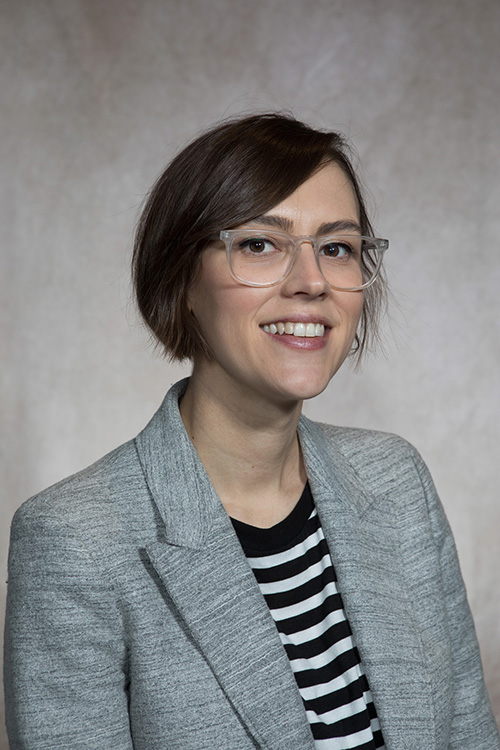
Sarah Baires, associate professor of anthropology
Baires will study the early occupation of the city, looking at how neighborhoods on the outskirts of the urban area related culturally and in infrastructure to the core “downtown” area. As many as 20,000 people lived in Cahokia, which was on the Illinois side of the Mississippi River near present-day St. Louis, MO.
Baires has studied Cahokia for more than 10 years and has written several books about it, most recently, “Cahokia and the North American Worlds” (March 2022, Cambridge University Press). Her research has been featured in documentaries on PBS and the Smithsonian Channel.
Her co-principal investigator, Melissa Baltus, associate professor of anthropology at the University of Toledo, will study the late collapse of the city. Cahokia was a metropolis from roughly 1000 AD to 1400 AD, when London and Paris were also developing. The reason for its abandonment is unknown. Large burial mounds like Monk’s Mound remain and have been extensively excavated.
Eastern students will participate in the new study through archaeological field schools, starting in the summer of 2024. The opportunity will be open first to anthropology majors taking Archaeological Field School, a course in how to conduct archaeological field work, and then to any students who want to pursue archaeology as a career. Funding is also available to hire student workers during the academic year to conduct artifact analysis in Baires’ lab.
Thread City Jazz Trio releases new album
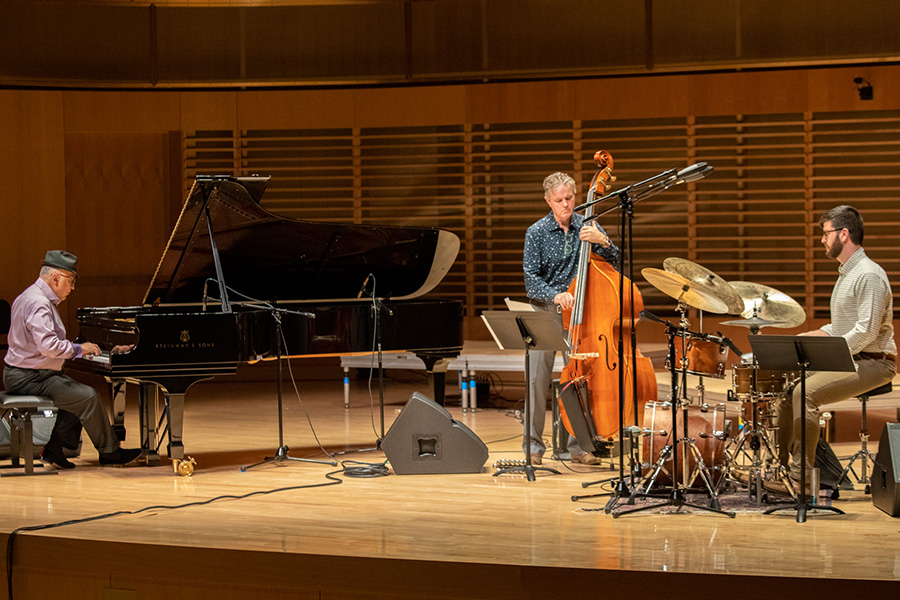
The revamped performance ensemble Thread City Jazz Trio features three music program faculty who released a new album this past January. The self-titled release is an adventurous reimagining of jazz standards through the fusion of the unique artistic perspectives of Anthony Cornicello (piano), Rick O’Neal (bass) and Matt Bronson (drums).
As colleagues at Eastern, Cornicello, O’Neal and Bronson inspire each other to be creatively engaged in bringing their own interpretations to jazz standards. Often, the members will try to play familiar pieces in the context of different genres. “There are times we’ll walk in and we’ll be like, ‘let’s try this as a Latin,’” said Cornicello. “Other times, it happens in performance.”
The trio’s new album represents a new direction, largely because Bronson joined the band only about six weeks before the album was recorded. “I was getting accustomed to playing with them,” he said.
"In a certain way, we had to look at it from a different perspective,” said Cornicello, as Bronson’s voice behind the drum kit is different from that of former drummer Venlo Odom. “We had to reconfigure some tunes.”
With the addition of Bronson, the band rebranded, having formerly been called the Straight Up Jazz Trio. “It was a different band, even with only one member different,” said O’Neal. “There’s only three of us.”
Bronson, who joined the band long after they had the idea of recording an album, said that he was inspired to “contribute to it in a way that was authentic.”
Eastern biologists use scorpions to research new antibiotics
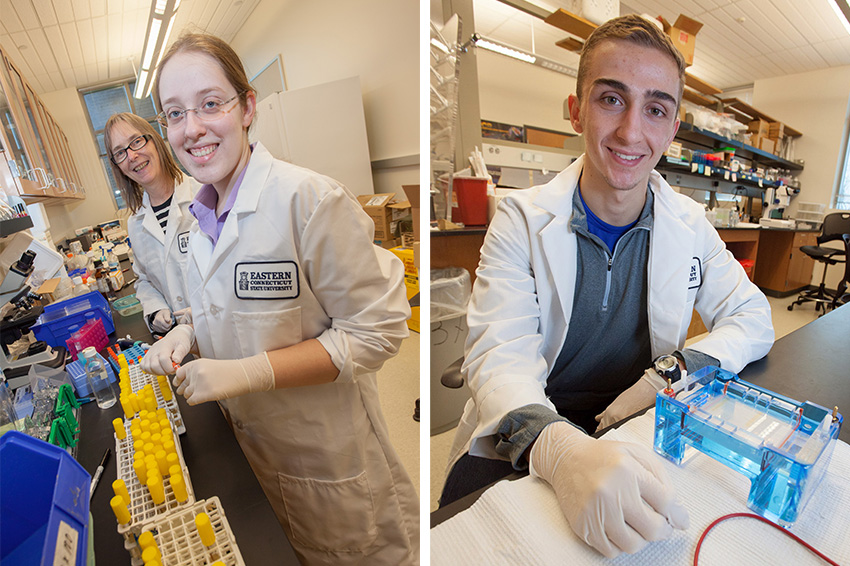
From left: Professor Barbara Murdoch, Lauren Atkinson and Christopher Shimwell
New biology research at Eastern has discovered that novel bacteria exist in the stingers of scorpions. Long considered a sterile environment, the research finds for the first time that this venom-producing appendage in fact contains a diverse microbiome. This may aid in the development of new antibiotic medicines, which could help alleviate the global issue of antibiotic resistance.
“The research shows that scorpions contain vast types of bacteria in their venom-producing organ, the telson,” said biology Professor Barbara Murdoch, who conducted the research alongside Professor Matthew Graham and former biology students Christopher Shimwell ’20 and Lauren Atkinson ’19. “This contradicts central dogma, since the telson has been previously thought to be a sterile environment, devoid of bacteria.”
Scorpions represent an ancient lineage of arachnids that have permeated throughout the world and are incredibly resilient. Given the harsh environments that many scorpions live in, scientists have speculated about the organism’s microbiome in its evolutionary success.
“We were curious to see if the stingers of scorpions, an in-credibly old group with origins in the Ordovician Period — more than 440 million years ago — possessed unique bacteria adapted to these ancient venomous environments,” said Graham.
The study’s greater implications concern the global health crisis of antibiotic resistance, in which drugs meant to treat bacterial infections are becoming increasingly ineffective at killing bacteria. Combating antibiotic resistance is one of the 17 Sustainable Development Goals of the United Nations.
“Although most people don’t care about scorpions,” said Murdoch, “finding novel bacteria within scorpions may lead to new sources of antibiotics to treat human microbial infections.”
Professors receive North Star fellowships

Two assistant professors at Eastern, Khai Zhi Sim and Soojin Kim, have received fellowships from the New England Board of Higher Education’s North Star Collective, which supports Black, Indigenous and People of Color (BIPOC) faculty. The fellowships are designed to help junior faculty achieve promotion and tenure, with a special emphasis on writing, publishing and providing mentorship.
Sim, assistant professor of economics and finance, studies banking, macro and monetary economics, and applied game theory. During his fellowship, Sim will work on two research projects: One will analyze the strategic interactions between financial institutions and policymakers, and the other, in collaboration with a Wesleyan University professor, will look at how bank bailouts incentivize banks’ investment in complicated and opaque assets.
Sim’s native language is Mandarin Chinese. “I believe that my participation in the fellowship would be a great help to me in writing the two research articles,” said Sim in his fellowship application. “As a non-native English speaker, I am usually at a disadvantage when it comes to communicating my ideas through writing.”
Kim, assistant professor of art and art history, will use her fellowship to work on a limited-edition artist’s book, “Granny Pants,” exploring the cultural aspects of one of her early memories of Korean grandmothers wearing baggy pants, a holdover from what Korean women were once forced to wear by Japanese colonial authorities in the early 1900s. These “Mom Pae,” a type of “balloon pants,” were popular with her grandmother’s generation in Korea.
Eastern was one of the North Star Collective’s founding members in 2022. The collective now provides fellowships to 16 member colleges and universities, both public and private, in New England.
Early childhood education videos reach 5 million views
Eastern’s Center for Early Childhood Education (CECE) reached a milestone on March 22 when it surpassed 5 million views on its YouTube channel. The center is a research and professional development institute focused on improving the quality of early care and education.
Center faculty and staff conduct research on child development and teaching strategies, and develop educational videos to train current and future teachers. Videos are hosted on the center’s website and YouTube channel.
The center’s YouTube channel has more than 250 videos featuring researchers and other experts, teachers, home day care providers, home visitors and program administrators. To date, more than 130 Eastern students have been involved in projects or research that led to videos or have served as production interns helping to capture and edit video footage.
Videos have been viewed around the world, with most views coming from the United States, Canada, Australia, the United Kingdom and India. Viewership also comes from countries such as the Philippines, Singapore, Malaysia and Pakistan.
CECE videos have received seven national Telly Awards for technical excellence in video production, most recently for “A Study of the Play of Dual Language Learners in an English-Speaking Classroom,” featuring the research of undergraduate student Stefanie Dominguez ’18.
'Chinatown Chronicles' captures vibrant community
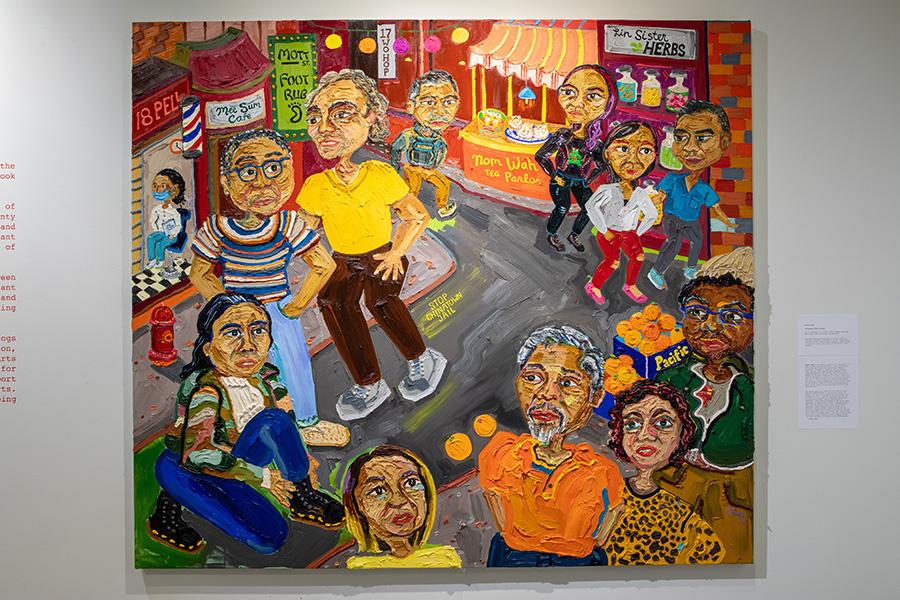
Eastern’s first exhibit of the spring 2023 semester was “Chinatown Chronicles.” In collaboration with Charles Yu’s “Interior Chinatown,” Eastern’s 2023 NEA Big Read book selection, the exhibit ran from Jan. 18-March 9.
Taking inspiration from Yu’s novel, Chinatown Chronicles “explores poignant themes of interior Chinatown through the work of 20 artists who offer unexpected connections and parallels for Yu’s incisive portrait of a vibrant community that has thrived in the face of unrelenting stereotyping,” explained Julia Wintner, director of Eastern’s Art Gallery.



